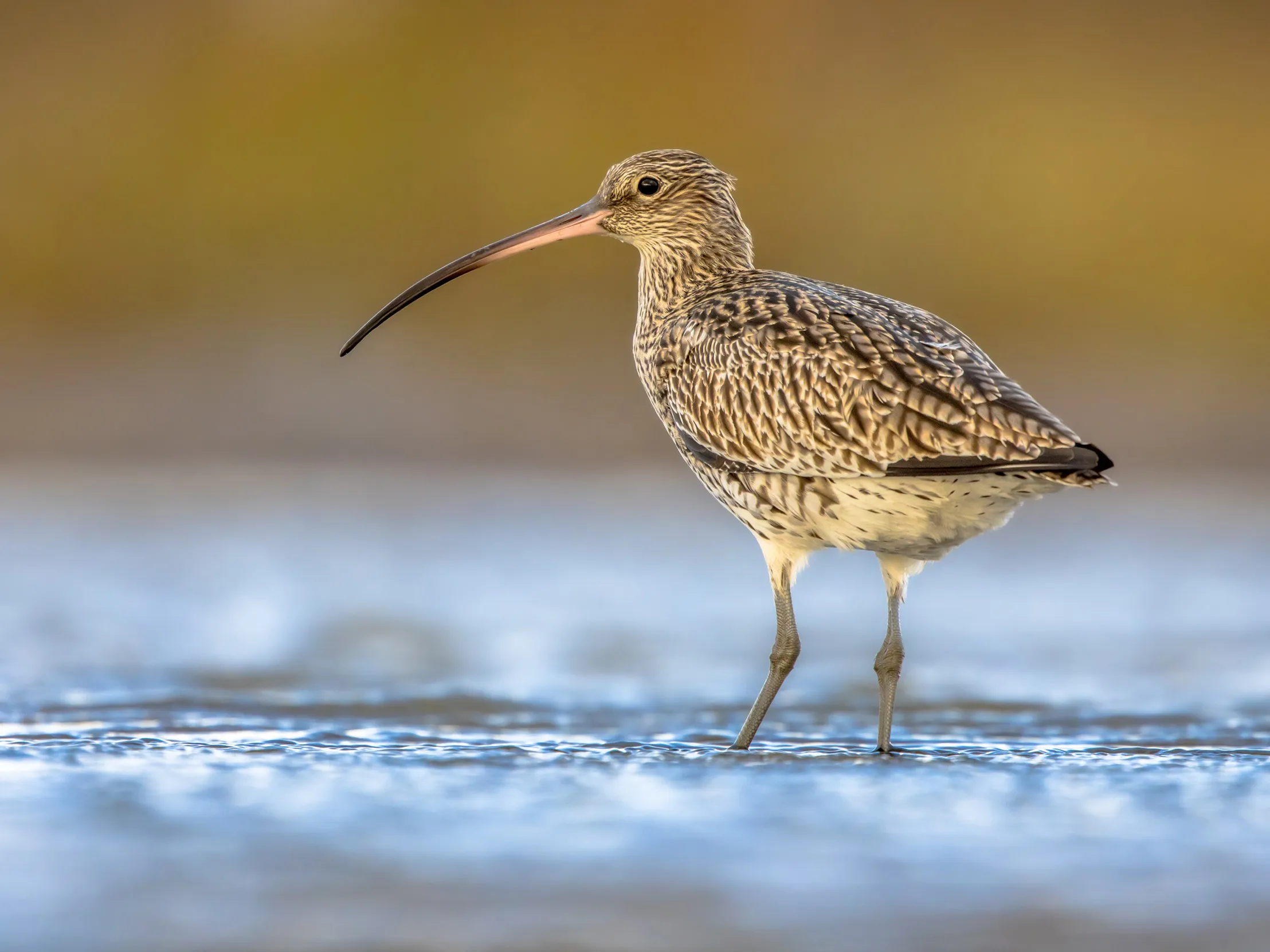
Curlew conservation - Advice for farmers
Curlews breed on open moorland, rough and damp pastures, unimproved hay meadows and boggy ground. They occasionally use arable crops and silage fields.

On this page
Curlews in brief
There has been a major decline in their numbers across the UK. In Northern Ireland, Wales and lowland England numbers are now perilously low. There was a 48% decline in population between 1995 and 2020.
These declines are a result of habitat loss and poor nesting success.
Key points
- Retain and restore rough, damp pasture and traditional hay meadows.
- Extensively graze to provide taller vegetation through the breeding season.
- Timing of cutting is critical in meadows.
- Provide damp areas, wet flushes or small, shallow pools as feeding areas for chicks.
- Avoid planting trees in curlew nesting areas as these may provide habitat for predators; in some areas control of foxes and crows may be required.
What this species needs
Tall, open vegetation for nesting from April to July
Curlews nest in a wide variety of upland vegetation types. They usually select relatively tall vegetation, either within a tussock on rough pasture or within the tall, but not too dense, vegetation of an unimproved hay crop. Whilst curlew will nest in silage due to the earlier cutting date this can result in destruction of eggs/chicks.
Ground invertebrates during the breeding season
Adults feed on earthworms, leatherjackets, beetles, spiders and caterpillars. Curlew chicks generally feed on surface insects and spiders.

How to help
On moorland
- Avoid conversion of moorland (by drainage, liming, fertilising or re-seeding) to improved grassland. Graze to achieve a mosaic of taller, tussocky vegetation and shorter grassy areas.
- Restoration of wet areas by blocking grips will improve the habitat for feeding.
On unimproved pasture
- Unimproved pasture should be managed with no, or very limited, use of fertiliser.
- Use light stocking levels from April to mid-June to maintain nesting cover and minimise the loss of nests through trampling.
- Grazing by cattle from late summer onwards will provide a suitable sward for nesting and feeding in the following spring.
Hay meadows
- Retain or restore some unimproved hay meadows rather than harvesting all grass as silage. Curlew can nest successfully in hay meadows which are closed off in April and cut after 15 July.
Wet areas
- Wet flushes, boggy areas and damp, rough grassland can be retained or re-created by avoiding or minimising new drainage and by blocking grips and drains where feasible. These are important invertebrate-rich feeding areas, particularly for chicks.
Tree cover
- Curlew avoid nesting and feeding in areas close to tall trees and scrub cover. Avoid planting trees close to fields used by nesting curlews.